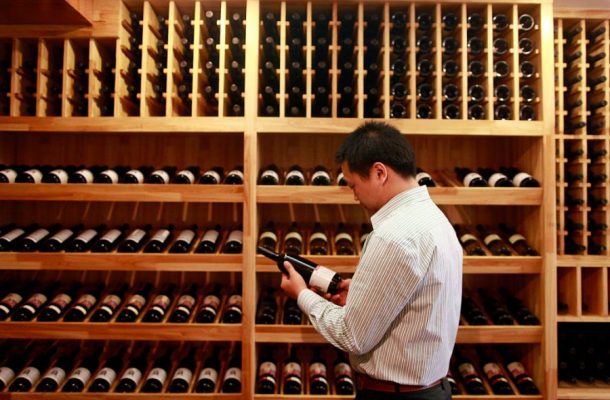More than ore

Australia’s non-traditional exports to China, including the now-threatened shipments of wine, have enjoyed runaway success since the China–Australia Free Trade Agreement (ChAFTA) was concluded in 2015.
The big three exports of iron ore, coal and LNG still account for 70% of Australia’s merchandise sales to China, but annual shipments of other goods have soared from $23 billion to $40 billion under the agreement, according to new detailed trade data from the Department of Foreign Affairs and Trade.
Australian exports of goods other than iron ore, coal and LNG to the rest of the world have been limping along, with annual growth of just 3.2% compared with an average growth rate of 11.6% a year in China every year since the deal was struck.*
Sales of services—predominantly education and tourism—to China have doubled to $17 billion under ChAFTA, compared with growth of 32% in all other markets. These sectors have been frozen under Covid-19, but are also under threat along with beef and barley.
ChAFTA exploited the complementarity of the Australian and Chinese economies. While Australia has held its place as the pre-eminent supplier of minerals and energy supporting the construction of the modern Chinese economy, it has also become an important supplier of goods and services to the rising Chinese middle class.
On the other side of the deal, China has strengthened its position as Australia’s dominant supplier of both investment and household goods. However, the trade advantage rests heavily on the Australian side.
While trade in both directions is now almost completely tariff-free, China’s tariffs were much higher to start with, so it gave away more in the negotiations.
The main gain which China sought from ChAFTA was equal treatment to the United States on foreign investment. Australian commitments on investment have since been qualified by the heightened security concerns in the relationship.
The Chinese wine market has been an outstanding success for Australian producers. Alcoholic drink exports to China, dominated by wine, rose from $210 million in 2014 to reach $1.2 billion last year.
Australian wine moved to zero tariffs in China at the beginning the last year, giving it a powerful advantage over French and Italian competitors and also putting the heat on domestic Chinese producers.
Over the past five years, the Chinese market has accounted for 88% of the growth in Australia’s alcohol exports.
Wine is among the many agriculture-related winners from ChAFTA. Sales of manufactured food products, for example, have soared from $166 million to $1.6 billion since 2014.
Exports of fruit and nuts to China have grown from virtually nothing to become a $1 billion a year market. China’s purchases of Australian lobster have also grown from zero to around $800 million under the trade pact.
Timber and woodchips now have a $1.5-billion market in China, up from negligible levels, while dairy sales have doubled.
Wool has also benefited from a reduction in Chinese tariffs to just 1%, with sales in the last financial year of $2.4 billion accounting for 75% of total wool exports.
The market for beef is more diverse, with China taking only 25% of total beef exports. However, the Chinese market has grown by 300% to $2.7 billion in the past five years, while exports to all other markets have grown by just 15%.
Besides food and wine, the only manufactured goods to have found substantial markets under ChAFTA are pharmaceutical products and cosmetics, with combined sales of $2 billion last year.
It is impossible to say how many of these gains are jeopardised by the deterioration in the bilateral relationship; however, agricultural markets are always vulnerable to regulatory interventions.
Both the wine industry and Trade Minister Simon Birmingham have been quick to assert that the Chinese claim of dumping is groundless, which suggests a geopolitical motive.
It is possible that some Australian producers with surplus inventory have been selling in China at marginal cost. The South China Morning Post, for example, has reported online sales of Australian wine in China for as little as ¥35 (A$7) a bottle. However, it’s doubtful that China would have launched the anti-dumping investigation if Sino-Australian relations had been in a better state.
China’s steel mills will continue to purchase Australian iron ore and coal. Its power industry is likely to stick to its contracted purchases of LNG, although it may wind back its imports of Australian thermal coal.
China will also remain an important market for other Australian industrial commodities such as copper, aluminium, zinc, nickel and gold, which were worth a combined $7 billion last year, more than double their level five years earlier.
The $50 billion in non-resource sales to China eclipses equivalent exports to any other market, with the US running second at $24 billion and Japan third at $12 billion. Australia’s non-resource trade with China has higher employment-to-sales ratios than in the resource sector and supports several hundred thousand Australian jobs.
There’s little likelihood that the tensions in the relationship and the stated desire by Prime Minister Scott Morrison to diversify suppliers will result in any material reduction in Australia’s purchases from China. It is the major source of industrial equipment, electronics and household supplies.
Although not matching the growth in Australia’s exports, China’s sales to Australia have risen by 53% in the past five years, far outstripping the 14% growth from all other markets.
While Australia has vetoed Huawei’s participation in 5G and, before that, in the National Broadband Network, it still purchases 61% of its telecommunications equipment from China, along with two-thirds of its computers and integrated electronic circuits.
China is by far the largest supplier of household goods, accounting for 70% of furniture imports and 74% of sporting goods, toys, games and prams, and more than half of Australia’s footwear and clothing supplies.
ChAFTA was the last bilateral trade agreement concluded by the Chinese government and was by far its most ambitious. President Xi Jinping was personally committed to its conclusion, making it unlikely the Chinese administration would walk away from it, despite its unhappiness with Australia’s sharpened security focus in the relationship.
China still sees common cause with Australia in regional trade negotiations and with the World Trade Organization.
* China and Australia signed an indicative agreement in November 2014. The final signing was in June 2015, and the agreement entered into force in December 2015. Comparisons in this article are from calendar year 2014 to 2019, as the tempo of trade accelerated following the signing of the indicative agreement.
This article was published by The Strategist.
David Uren is a Melbourne-based business writer and investor relations advisor. He has been writing about business for the past 25 years for publications including The Australian, The Age and BRW.












